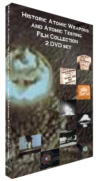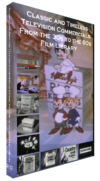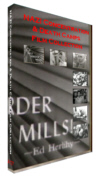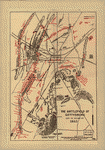Author Archive
Old movies and old tv commercials often have one thing in common. When we look at them from our jaded Hollywood slicked eye, they often look funny, primitive and old. And we wonder how people could have sat through an old black and white movie with no special effects or old tv commercials with no animations and a corny story line.
One thing for certain though, many old tv commercials are funny because they are dated and so simplistic. It is fun to watch old tv commercials – the classics – for our favorite products and compare them to modern tv commercials for the same products.
In fact, it can be downright fun to watch television commercials like this collection of classic tv commercials. It makes for a nice night of remembrance and quite a few laughs to pop the popcorn, pop in the classic tv commercials DVD and just relax and unwind with some of your favorite oldies. And it is great for the kids too – as they will get a kick out of all these funny tv commercials – and who knows – they may even get excited by something from your childhood memory instead of the latest slick video games for just a few moments.
The chestnut tree that comforted Anne Frank while she was hiding from the Nazi’s in occupied Holland will be cut down soon according to the Amsterdam city council. The tree, approximately 150 years old, has recently been attacked by an agressive fungus and a Horse Chestnut Leaf Miner moth and is in very poor shape. The sickness is so bad that the tree is dying from the inside out.
The tree was made famous in Anne Frank’s book, “The Diary of Anne Frank” which has been ready by an estimated 25 million people. Anne describes how she often looked out the attic window and how it gave her hope during those dark days prior to her capture.
Anne Frank died in March 1945 of typhus in the Bergen-Belsen concentration camp.
The North American Indian (1907-1930), by Edward S. Curtis, was published in a limited edition and sold by subscription. This project was launced in 1907 and subscriptions to the series were sold for $3,000 each at that time (estimated to be about $21,000 in 2006 dollars.) By 1924, the price of a subscription rose to $4,20. Curtis planned on selling 500 subscriptions but by the time the project was liquidated in 1935, he was able to secure only 220 subscriptions.
The North American Indian series of 20 volumes is significant in many ways. From a historical perspective, it is a grand compilation of spectacular images of American Indians of various tribes living life and performing various ceremonies. Each volume contained 100 or so images and the entire collection had 2226 images in total covering a variety of Indian tribes, Apache, Sioux, Crow, Hopi, Shoshoneans and many others.
The other item of historical significance is that this is a very early example of an entrepreneur selling a product as a subscription series. This kind of selling is very common now – think book of the month club, wine of the month club, etc. – but back then it was very rare. So that also marks The North American Indian as a very interesting footnote in the realm of advertising history.
A key to a successful treasure or relic hunt with a metal detector is research. If you want to have a chance of finding interesting relics, you need to know where activities occurred that could leave a trail of artifacts. For instance, if you knew the location of an abandoned mining camp from 150 years ago, you could probably find a variety of unique mining memorabilia buried in the ground. The same with wars. If you knew the location of an old battlefield, chances are very good that you could find old bullets and other metal peices – such as buttons from uniforms, etc. in the area.
So how does one research these things?
The easiest way is with accurate maps that were created during the time period in question. They will pinpoint key battle areas that can then be correlated with modern maps to give you a good location to start your search. Other good research tools are old newspapers from the location and era you are interested in researching and local historians in the smaller towns in the area.
If you do good research before beginning your adventure, your chances of discovering interesting bits of history are greatly increased. And of course the enjoyment of the event is much higher with each success you have.
 With so much talk nowadays about an atomic Iran and atomic North Korea and the recent weapons test over there, it is is interesting to look at some of our own historic nuclear tests to see how they were done – and to get an understanding of how devastatingly powerful a nuclear bomb – exploded aboveground – really is.
With so much talk nowadays about an atomic Iran and atomic North Korea and the recent weapons test over there, it is is interesting to look at some of our own historic nuclear tests to see how they were done – and to get an understanding of how devastatingly powerful a nuclear bomb – exploded aboveground – really is.
The government has a huge archive of early atomic weapon film clips – including the very famous Able and Baker atomic blasts. There are small clips of each film available on the site and videos of the entirety of each test can be purchased for a very reasonable sum.



